Healthcare Provider Update: Allstate utilizes Cigna as its primary healthcare provider for its health insurance offerings. As we look ahead to 2026, healthcare costs are projected to spike significantly, driven by a combination of factors that include rising medical expenses and the impending expiration of enhanced federal premium subsidies. Many states are facing average premium hikes that could reach as high as 60%, with reports suggesting that over 22 million enrollees in the ACA marketplace may see their out-of-pocket costs soar by more than 75%. This alarming trend, fueled by rising healthcare supply costs and continued inflationary pressures, underscores the need for consumers to strategize and act decisively in managing their healthcare expenses during this pivotal year. Click here to learn more

With 2021 wrapped up and going into the new year, the IRS just released Revenue Procedure 2021-45 and Notice 2021-61 which detail the tax changes and cost of living adjustments for 2022. The main points of this new release that will most likely affect Allstate employees would be:
- This year, the tax filing deadline is on April 18, instead of the typical April 15.
- The standard deduction for married couples filing jointly for tax year 2022 rises to $25,900 up $800 from the prior year.
- For single taxpayers and married individuals filing separately, the standard deduction rises to $12,950 for 2022, up $400, and for heads of households, the standard deduction will be $19,400 for tax year 2022, up $600.
Also, the personal exemption for tax year 2022 remains at 0, as it was for 2021. This elimination of the personal exemption was a provision in the Tax Cuts and Jobs Act.
If you experienced a job change, retirement or lapse in employment from Allstate, the “lookback” rule may be an important option to consider when filing taxes this year. You’ll also have the option to use your 2019 earned income for your 2021 return thanks to changes from the American Rescue Plan Act. This rule is mainly used for calculation of the Earned Income Tax Credit and the Child Tax Credit.
Remote workers employed by Allstate might face double taxation on state taxes. Due to the pandemic, many employees moved back home which could have been outside of the state where they were employed. Last year, some states had temporary relief provisions to avoid double taxation of income, but many of those provisions have expired. There are only six states that currently have a ‘special convenience of employer’ rule: Connecticut, Delaware, Nebraska, New Jersey, New York, and Pennsylvania. If you work remotely for Allstate, and if you don't currently reside in those states, consult with your tax advisor if there are other ways to mitigate the double taxation.
Retirement account contributions: Contributing to your Allstate 401k plan can cut your tax bill significantly, and the amount you can save has increased for 2022. In 2022, the IRS has raised the contribution limit for a 401k to $20,500 - up by $1,000. Meanwhile, Allstate workers who are older than 50 years old are eligible for an extra catch-up contribution of $6,500.
There are important changes for the Earned Income Tax Credit (EITC) that you, as a taxpayer employed by Allstate, should know:
- The income threshold has been increased for single filers with no children; the American Rescue Plan Act temporarily boosted it from $543 to $1,502 in 2021; this expansion has not been carried over to the 2022 tax year.
- Married taxpayers filing separately can qualify: You can claim the EITC as a married filing separately if you meet other qualifications. This wasn't available in previous years.
Increased deduction for cash charitable contributions: In years past, the threshold was $300 for both single and joint filers, but in 2022 that changed to $300 for single filers and up to $600 for joint filers.
Child Tax Credit changes:
- A $2,000 credit per dependent under age seventeen..
- Income thresholds of $400,000 for married couples and $200,000 for all other filers (single taxpayers and heads of households).
- A 70 percent, partial refundability affecting individuals whose tax bill falls below the credit amount.
2022 Tax Brackets
-png.png?width=575&name=image%20(18)-png.png)
Inflation reduces purchasing power over time as the same basket of goods will cost more as prices rise. In order to maintain the same standard of living throughout your retirement after leaving Allstate, you will have to factor rising costs into your plan. While the Federal reserve strives to achieve 2% inflation rate each year, in 2021 that rate shot up to 7% a drastic increase from 2020’s 1.4%. While prices as a whole have risen dramatically, there are specific areas to pay attention to if you are nearing or in retirement from Allstate, like healthcare. Many Allstate corporate retirees depend on Medicare as their main health care provider and in 2022 that healthcare out-of-pocket premium is set to increase by 14.5%. In addition to Medicare increases, the cost of over-the-counter medications is also projected to increase by at least 10%. The Employee Benefit Research Institute (ERBI) found in their 2022 report that couples with average drug expenses would need $296,000 in savings just to cover those expenses in retirement. It is crucial to take all of these factors into consideration when constructing your holistic plan for retirement from Allstate.
*Source: IRS.gov, Yahoo, Bankrate
Featured Video
Articles you may find interesting:
- Corporate Employees: 8 Factors When Choosing a Mutual Fund
- Use of Escrow Accounts: Divorce
- Medicare Open Enrollment for Corporate Employees: Cost Changes in 2024!
- Stages of Retirement for Corporate Employees
- 7 Things to Consider Before Leaving Your Company
- How Are Workers Impacted by Inflation & Rising Interest Rates?
- Lump-Sum vs Annuity and Rising Interest Rates
- Internal Revenue Code Section 409A (Governing Nonqualified Deferred Compensation Plans)
- Corporate Employees: Do NOT Believe These 6 Retirement Myths!
- 401K, Social Security, Pension – How to Maximize Your Options
- Have You Looked at Your 401(k) Plan Recently?
- 11 Questions You Should Ask Yourself When Planning for Retirement
- Worst Month of Layoffs In Over a Year!
- Corporate Employees: 8 Factors When Choosing a Mutual Fund
- Use of Escrow Accounts: Divorce
- Medicare Open Enrollment for Corporate Employees: Cost Changes in 2024!
- Stages of Retirement for Corporate Employees
- 7 Things to Consider Before Leaving Your Company
- How Are Workers Impacted by Inflation & Rising Interest Rates?
- Lump-Sum vs Annuity and Rising Interest Rates
- Internal Revenue Code Section 409A (Governing Nonqualified Deferred Compensation Plans)
- Corporate Employees: Do NOT Believe These 6 Retirement Myths!
- 401K, Social Security, Pension – How to Maximize Your Options
- Have You Looked at Your 401(k) Plan Recently?
- 11 Questions You Should Ask Yourself When Planning for Retirement
- Worst Month of Layoffs In Over a Year!
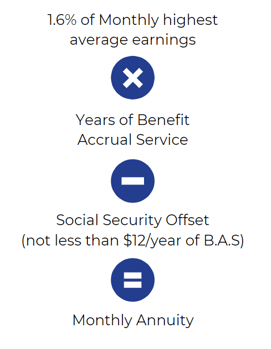
Highest Average Earnings is the monthly average of your regular earnings for the 36 consecutive months in which they’re the highest.
In most cases, this will be the sum of your last 36 months divided by 36.
The applicable interest rate is a separate average of each of the three segment rates for the fifth, fourth and third months preceding your annuity start date. The three segment rates are calculated by the IRS according to regulations that are also part of the Pension Protection Act of 2006 and reflect the yields of short-, mid-, and long-term corporate bonds. (Note: Chevron also has Legacy Unocal and Legacy Texaco Retirement Plans)
Different Plans
Similar to Chevron, AT&T has many different plans available. With AT&T, they have different pension plan formulas for management & non-management. Lets look at a sample non-management plan.
AT&T non-management employees have their own Craft/non-management pension plan. Let's take a look at a pension example for a gentleman by the name of Joe Smith who is hourly and using the Craft/non-management pension plan.
In 1990, Joe is hired by AT&T and participates in the Craft Pension Plan:
Craft Pension Plan
-
Craft has a defined benefit plan that uses pension bands.
-
A pension band determines your benefits based on your job title/grade level/occupation.
- Joe will receive a monthly dollar amount into his account for each year of service.
-
Joe's benefit (pension band may change yearly).
-
A pension band determines your benefits based on your job title/grade level/occupation.
Rising Interest Rates e-book
https://www.irs.gov/newsroom/irs-provides-tax-inflation-adjustments-for-tax-year-2022
https://news.yahoo.com/taxes-2022-important-changes-to-know-164333287.html
https://www.nerdwallet.com/article/taxes/federal-income-tax-brackets
https://www.the-sun.com/money/4490094/key-tax-changes-for-2022/
https://www.bankrate.com/taxes/child-tax-credit-2022-what-to-know/
How does the Allstate Retirement Plan ensure that employees are adequately informed of their retirement benefits and options? Specifically, what resources does Allstate offer to help participants understand the complexities of their benefits, and how can employees stay updated on changes to the Allstate Retirement Plan?
Allstate Retirement Plan resources: Allstate provides resources through its website AllstateGoodLife.com, where employees can model different pension scenarios, compare benefit estimates, and request pension statements. Employees are also encouraged to contact the Allstate Benefits Center for personalized support. Regular updates about the plan, including changes in compensation and interest credits, ensure participants stay informed(Allstate_Retirement_Pla…).
In what ways does the Allstate Retirement Plan accommodate employees who might need to take a leave of absence due to military duty? Discuss how the plan's provisions align with federal regulations and the protections offered to ensure that employees do not lose accrued benefits during such leaves.
Military leave accommodations: The Allstate Retirement Plan adheres to the Uniformed Services Employment and Reemployment Rights Act (USERRA), ensuring that employees on military leave continue to accrue benefits and vesting service under the plan. Interest credits will continue to be added to their accounts during the leave(Allstate_Retirement_Pla…).
What factors determine the calculation of the Cash Balance Benefit under the Allstate Retirement Plan? Detail how annual compensation is integrated into benefit calculations, and what limitations exist concerning eligible compensation for retirement benefits.
Cash Balance Benefit calculation: The Cash Balance Benefit is based on pay credits and interest credits. Pay credits depend on the employee’s years of vesting service, and are calculated as a percentage of their annual compensation. Annual compensation includes salary, bonuses, and certain paid leave, but excludes severance payments and certain awards. The benefit is subject to IRS limits(Allstate_Retirement_Pla…).
Can you explain the differences between the Final Average Pay Benefit and the Cash Balance Benefit as part of the Allstate Retirement Plan? Discuss how benefits are accrued under each formula and the implications for employees transitioning between plans.
Final Average Pay vs. Cash Balance Benefit: The Final Average Pay Benefit was frozen as of December 31, 2013, for participants, while the Cash Balance Benefit is an ongoing accrual based on eligible annual compensation and interest credits. Employees with preserved Final Average Pay Benefits can receive both this benefit and a Cash Balance Benefit, creating a dual structure for those transitioning between plans(Allstate_Retirement_Pla…).
What options do Allstate employees have for designating beneficiaries under the Retirement Plan, and how do these choices impact the benefits received by the designated individuals? Discuss the procedures for updating beneficiary designations and the importance of keeping this information current.
Beneficiary designations: Employees can designate beneficiaries for their Cash Balance and Final Average Pay Benefits through AllstateGoodLife.com. It is crucial to update beneficiary designations after significant life events such as marriage, as spousal consent is required for naming someone other than the spouse. Keeping this information current ensures smooth benefit distribution(Allstate_Retirement_Pla…).
How does the Allstate Retirement Plan define and measure Vesting Service, and why is it critical for employees to understand this definition? Explain the implications of Vesting Service on eligibility for benefits and the calculations involved in determining retirement pay.
Vesting Service definition: Vesting Service is used to determine eligibility for benefits and is based on the total years of service with Allstate, including military leave and breaks in service under certain conditions. Employees must understand this concept, as vesting impacts their eligibility to receive retirement benefits, generally after three years of service(Allstate_Retirement_Pla…).
What steps must Allstate employees follow to commence payment of their retirement benefits when they reach eligibility? Outline the necessary paperwork and timelines involved, as well as how timely submissions can affect payout dates.
Commencing retirement benefits: To commence payment of retirement benefits, employees must notify the Allstate Benefits Center 30 to 60 days prior to their selected Payment Start Date. This process involves submitting paperwork via the website or phone, with the payment date starting on the first day of the month(Allstate_Retirement_Pla…)(Allstate_Retirement_Pla…).
How do the provisions of the Allstate Retirement Plan address scenarios where an employee transitions to independent contractor status? Discuss the impact of this transition on their previously accrued benefits and any applicable rules that pertain to their retirement planning.
Transition to independent contractor status: Independent contractors are generally not eligible for the Allstate Retirement Plan. However, employees who previously accrued benefits under the plan before transitioning to contractor status will retain those benefits, but no further credits will accrue during their time as a contractor(Allstate_Retirement_Pla…).
How are employees of Allstate notified of their rights under ERISA, and what resources are available for participants who believe their rights have been violated? Discuss the role of the Administrative Committee in safeguarding participant rights and ensuring compliance with federal regulations.
ERISA rights and resources: Employees are informed of their rights under ERISA through plan documents and can contact the Allstate Benefits Center for assistance. The Administrative Committee ensures compliance with ERISA and oversees participant rights, including providing resources for claims and disputes(Allstate_Retirement_Pla…).
How can employees contact Allstate to learn more about their retirement benefits detailed in the Allstate Retirement Plan? Include specifics on the best methods for reaching out, including contact numbers and online resources available to employees for additional assistance.
Contacting Allstate for retirement plan information: Employees can contact Allstate through the Allstate Benefits Center at (888) 255-7772 or online at AllstateGoodLife.com. The website provides access to pension estimates, beneficiary management, and retirement planning tools(Allstate_Retirement_Pla…).
Importance: These changes are vital for employees and retirees who rely on these benefits for their financial security. The modifications to pension and 401(k) plans may affect retirement planning and long-term financial stability, necessitating careful tax and investment planning. Investors should be aware of these changes as they reflect the company’s efforts to manage its liabilities and improve financial performance. Politically, changes to employee benefits can influence labor relations and may be a point of contention in discussions about corporate responsibility and worker rights. | | Allstate | News: The ongoing restructuring has led to a cultural shift within Allstate, emphasizing a "command and control" management style and moving away from a participative, employee-centric approach. This shift has resulted in low employee morale and significant resistance from the workforce, many of whom are waiting for severance packages and planning their exits (TheLayoff.com) (TheLayoff.com).
Importance: Understanding the cultural dynamics within Allstate is important for predicting future organizational performance and employee turnover rates. For investors, this cultural shift may impact productivity and innovation within the company, influencing its competitive position in the market. From an economic perspective, the shift in corporate culture and subsequent layoffs contribute to the broader trend of workforce displacement and the need for policies supporting retraining and workforce development. Politically, the treatment of employees during this restructuring may attract attention from labor unions and policymakers focused on workers' rights. |
/General/General%2013.png?width=1280&height=853&name=General%2013.png)





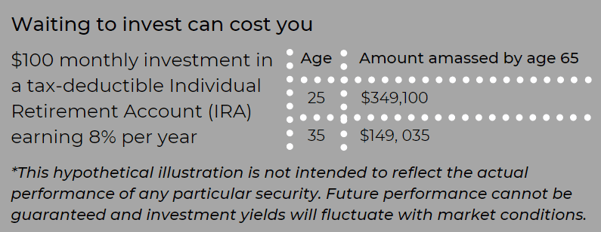

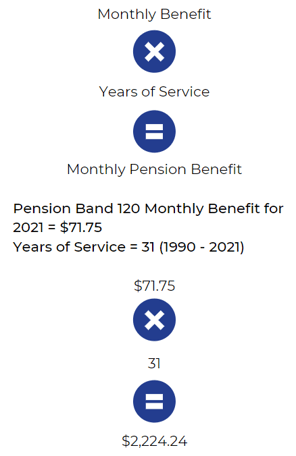

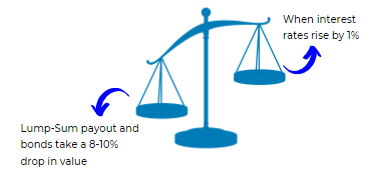



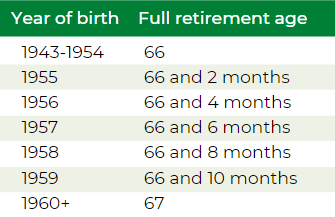

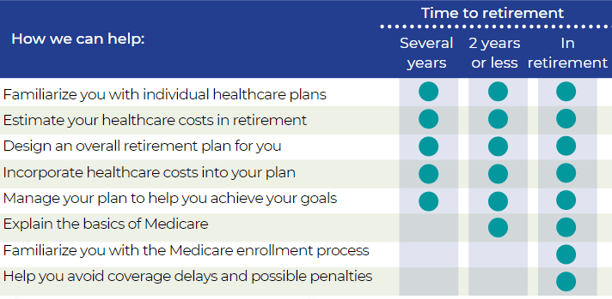







-2.png?width=300&height=200&name=office-builing-main-lobby%20(52)-2.png)









.webp?width=300&height=200&name=office-builing-main-lobby%20(27).webp)


-2.png)









.webp)